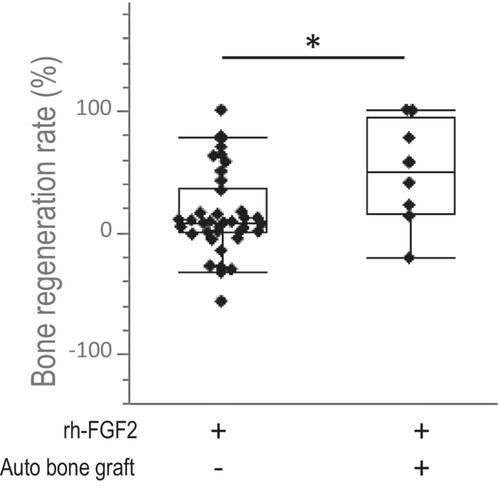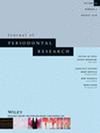Predictive factors of periodontal regeneration outcomes using rhFGF-2: A case–control study
Abstract
Objective
This study aimed to investigate the factors influencing the clinical outcomes of regenerative therapy using recombinant human fibroblast growth factor-2 (rhFGF-2).
Background
rhFGF-2 promotes periodontal regeneration, and identifying the factors influencing this regeneration is important for optimizing the effectiveness of rhFGF-2.
Methods and Materials
This study used a hospital information-integrated database to identify patients who underwent periodontal regenerative therapy with rhFGF-2. Factors included age, smoking status, diabetes mellitus (DM), periodontal inflamed surface area (PISA) at the initial visit, whether the most posterior tooth was involved or not, and preoperative radiological bone defect angle. Periodontal regenerative therapy outcomes were defined as good if radiographic bone fill ≥35% or periodontal pocket closure at 9–15 months after surgery. Bone fill rate (%) and periodontal pocket depth (mm) were also used as outcome measures. Factors were evaluated by simple regression analysis, and then the association between factors and the outcomes was determined by multivariate analysis.
Results
PISA and age at the first visit did not significantly influence the success or failure of bone fill rate byrhFGF-2. However, DM, radiographic bone defect angle, and the most posterior tooth significantly influenced the regenerative effect (success/failure in bone fill) of rhFGF-2. The most posterior tooth was significantly associated with bone fill rate by rhFGF-2. Examination of the association between pocket closure and factors shows that the most posterior tooth significantly influenced. The most posterior tooth and preoperative PPD were significantly associated with pocket reduction depth. For the most posterior tooth, a significantly higher bone regeneration rate (p < .05) was observed with a combination of autologous bone graft and rhFGF-2 than with rhFGF-2 alone, and the effect was significant in multivariate analysis.
Conclusions
The radiographic bone defect angle, the involvement of most posterior teeth, and the presence of DM influenced the effectiveness of rhFGF-2 in periodontal regeneration. However, PISA values and age at the initial visit had no significant effect.


 求助内容:
求助内容: 应助结果提醒方式:
应助结果提醒方式:


